1. S. Spielberg, M. Crichton, D. Koepp, J. Williams, K. Kennedy and G. R. Molen, Jurassic Park, Ottawa, ON, Canada:MCA Home Video Canads, 1993.
2 . Kutsch, G. Schwarz, H. Fischer and H. Kautz, "Wireless transmission of muscle potentials during free flight of a locust", J. Experim. Biol., vol. 185, no. 1, pp. 367-373, Dec. 1993.
3. M. M. Maharbiz and H. Sato, "Cyborg beetles", Sci. Amer., vol. 303, no. 6, pp. 94-99, Dec. 2010, [online] Available: https://www.jstor.org/stable/26002311.
4. A. Dodd, "The trouble with insect cyborgs", Soc. Animals, vol. 22, no. 2, pp. 153-173, Feb. 2014, [online] Available: https://www.academia.edu/6216348/The_Trouble_with_Insect_Cyborgs.
5. L. Floridi, Information: A Very Short Introduction, Oxford, U.K.:OUP Oxford, 2010.
6. P. Godfrey-Smith and K. Sterelny, Biological Information, 2016, [online] Available: https://plato.stanford.edu/archives/sum2016/entries/information-biological/.
7. N. Wiener, Cybernetics or Control and Communication in the Animal and the Machine, Cambridge, MA, USA:MIT Press, 2019.
8. G. Canguilhem, Knowledge of life, New York, NY, USA:Fordham Univ. Press, 2008.
9. D. Romano, E. Donati, G. Benelli and C. Stefanini, "A review on animal–robot interaction: From bio-hybrid organisms to mixed societies", Biol. Cybern., vol. 113, no. 3, pp. 201-225, Jun. 2019, [online] Available: http://dx.doi.org/10.1007/s00422-018-0787-5.
10. H. Sato and M. M. Maharbiz, "Recent developments in the remote radio control of insect flight", Frontiers Neurosci., vol. 4, pp. 199, Dec. 2010, [online] Available: https://www.frontiersin.org/article/10.3389/fnins.2010.00199.
11. F. Rieke, D. A. Bodnar and W. Bialek, "Naturalistic stimuli increase the rate and efficiency of information transmission by primary auditory afferents", Proc. Roy. Soc. London B Biol. Sci., vol. 262, no. 1365, pp. 259-265, 1995, [online] Available: https://royalsocietypublishing.org/doi/abs/10.1098/rspb.1995.0204.
12. G. D. Lewen, W. Bialek and R. R. D. R. V. Steveninck, "Neural coding of naturalistic motion stimuli", Netw. Comput. Neural Syst., vol. 12, no. 3, pp. 317-329, Jan. 2001.
13. S. Musall, A. E. Urai, D. Sussillo and A. K. Churchland, "Harnessing behavioral diversity to understand neural computations for cognition", Current Opinion Neurobiol., vol. 58, pp. 229-238, Oct. 2019, [online] Available: https://www.sciencedirect.com/science/article/pii/S0959438819300285.
14. P. Schmid-Hempel, "Do honeybees get tired? The effect of load weight on patch departure", Animal Behaviour, vol. 34, no. 4, pp. 1243-1250, Aug. 1986, [online] Available: https://www.sciencedirect.com/science/article/pii/S000334728680183X.
15. A. Bozkurt, R. F. Gilmour, A. Sinha, D. Stern and A. Lal, "Insect–Machine interface based neurocybernetics", IEEE Trans. Biomed. Eng., vol. 56, no. 6, pp. 1727-1733, Jun. 2009.
16. A. Dirafzoon, J. Bethhauser, J. Schornick, J. Cole, A. Bozkurt and E. Lobaton, "Poster abstract: Cyborg-insect networks for mapping of unknown environments", Proc. ACM/IEEE Int. Conf. Cyber-Phys. Syst. (ICCPS), pp. 216, Apr. 2014.
17. A. Dirafzoon, A. Bozkurt and E. Lobaton, "A framework for mapping with biobotic insect networks: From local to global maps", Robot. Auto. Syst., vol. 88, pp. 79-96, Feb. 2017, [online] Available: https://www.sciencedirect.com/science/article/pii/S092188901530289X.
18. A. Bozkurt, E. Lobaton and M. Sichitiu, "A biobotic distributed sensor network for under-rubble search and rescue", Computer, vol. 49, no. 5, pp. 38-46, May 2016.
19. J. Cole, A. Bozkurt and E. Lobaton, "Localization of biobotic insects using low-cost inertial measurement units", Sensors, vol. 20, no. 16, pp. 4486, Aug. 2020, [online] Available: https://www.mdpi.com/1424-8220/20/16/4486.
20. A. Bozkurt, "Latest advances in biobotic agents for environmental sensor networks", Trans. Jpn. Soc. Med. Biol. Eng., vol. 51, pp. M-166, 2013.
21. I. Fishel, Y. Amit, N. Shvil, A. Sheinin, A. Ayali, Y. Yovel, et al., "Ear-bot: Locust ear-on-a-chip bio-hybrid platform", Sensors, vol. 21, no. 1, pp. 228, Jan. 2021, [online] Available: https://www.mdpi.com/1424-8220/21/1/228.
22. V. Iyer, A. Najafi, J. James, S. Fuller and S. Gollakota, "Wireless steerable vision for live insects and insect-scale robots", Sci. Robot., vol. 5, no. 44, Jul. 2020, [online] Available: https://www.science.org/doi/10.1126/scirobotics.abb0839.
23. A. Bozkurt, A. Paul, S. Pulla, A. Ramkumar, B. Blossey, J. Ewer, et al., "Microprobe microsystem platform inserted during early metamorphosis to actuate insect flight muscle", Proc. IEEE 20th Int. Conf. Micro Electro Mech. Syst. (MEMS), pp. 405-408, Jan. 2007.
24. S. Giselbrecht, B. E. Rapp and C. M. Niemeyer, "The chemistry of cyborgs-interfacing technical devices with organisms", Angew. Chem. Int. Ed., vol. 52, no. 52, pp. 13942-13957, Dec. 2013.
25. T. Latif and A. Bozkurt, "Roach biobots: Toward reliability and optimization of control", IEEE Pulse, vol. 8, no. 5, pp. 27-30, Sep. 2017.
26. N. Ando and R. Kanzaki, "Insect-machine hybrid robot", Current Opinion Insect Sci., vol. 42, pp. 61-69, Dec. 2020, [online] Available: https://www.sciencedirect.com/science/article/pii/S2214574520301152.
27. H. D. Nguyen, P. Z. Tan, H. Sato and T. T. Vo-Doan, "Sideways walking control of a cyborg beetle", IEEE Trans. Med. Robot. Bionics, vol. 2, no. 3, pp. 331-337, Aug. 2020.
28. R. E. Ritzmann, R. D. Quinn and M. S. Fischer, "Convergent evolution and locomotion through complex terrain by insects vertebrates and robots", Arthropod Struct. Develop., vol. 33, no. 3, pp. 361-379, Jul. 2004, [online] Available: https://www.sciencedirect.com/science/article/pii/S1467803904000271.
29. Y. Li, J. Wu and H. Sato, "Feedback control-based navigation of a flying insect-machine hybrid robot", Soft Robot., vol. 5, no. 4, pp. 365-374, Aug. 2018, [online] Available: https://www.liebertpub.com/doi/abs/10.1089/SORO.2017.0118.
30. Y. Li and H. Sato, "Insect-computer hybrid robot", Mol. Frontiers J., vol. 2, no. 1, pp. 30-42, Jan. 2018.
31. Y. Li, H. Sato and B. Li, "Feedback altitude control of a flying insect-computer hybrid robot", IEEE Trans. Robot., vol. 37, no. 6, pp. 2041-2051, Apr. 2021.
32. T. Latif and A. Bozkurt, "Line following terrestrial insect biobots", Proc. Annu. Int. Conf. IEEE Eng. Med. Biol. Soc., pp. 972-975, Aug. 2012.
33. W. M. Tsang, A. Stone, Z. Aldworth, D. Otten, A. I. Akinwande, T. Daniel, et al., "Remote control of a cyborg moth using carbon nanotube-enhanced flexible neuroprosthetic probe", Proc. IEEE 23rd Int. Conf. Micro Electro Mech. Syst. (MEMS), pp. 39-42, Jan. 2010.
34. F. Cao and H. Sato, "Insect–computer hybrid robot achieves a walking gait rarely seen in nature by replacing the anisotropic natural leg spines with isotropic artificial leg spines", IEEE Trans. Robot., vol. 35, no. 4, pp. 1034-1038, Aug. 2019.
35. Feng, Yang, Jiang and Zheng, "Research on key techniques of insect flapping onset control based on electrical stimulation", Sensors, vol. 20, no. 1, pp. 239, Dec. 2019, [online] Available: https://www.mdpi.com/1424-8220/20/1/239
36. T. T. Vo Doan, M. Y. W. Tan, X. H. Bui and H. Sato, "An ultralightweight and living legged robot", Soft Robot., vol. 5, no. 1, pp. 17-23, Feb. 2018, [online] Available: https://www.liebertpub.com/doi/abs/10.1089/soro.2017.0038.
37. R. Holzer and I. Shimoyama, "Locomotion control of a bio-robotic system via electric stimulation", Proc. IEEE/RSJ Int. Conf. Intell. Robots Syst. (IROS), vol. 3, pp. 1514-1519, Sep. 1997.
38. J. C. Erickson, M. Herrera, M. Bustamante, A. Shingiro and T. Bowen, "Effective stimulus parameters for directed locomotion in madagascar hissing cockroach biobot", PLoS ONE, vol. 10, no. 8, Aug. 2015.
39. K. Visvanathan and Y. B. Gianchandani, "Locomotion response of airborne ambulatory and aquatic insects to thermal stimulation using piezoceramic microheaters", J. Micromech. Microeng., vol. 21, no. 12, Nov. 2011.
40. J. Register, J. Wheeler, C. Segura, D. Callahan, C. Salthouse, C. Lissandrello, et al., "Advances in flexible optrode hardware for use in cybernetic insects", Proc. 10th Biosensing Nanomedicine, Aug. 2017.
41. D. L. Le, Ferdinandus, C. K. Tnee, T. T. Vo Doan, S. Arai, M. Suzuki, et al., "Neurotransmitter-loaded nanocapsule triggers on-demand muscle relaxation in living organism", ACS Appl. Mater. Interfaces, vol. 10, no. 44, pp. 37812-37819, Nov. 2018.
42. S. Tadepalli, S. Cao, D. Saha, K.-K. Liu, A. Chen, S. H. Bae, et al., "Remote-controlled insect navigation using plasmonic nanotattoos", bioRxiv, pp. 1-14, Jan. 2020.
43. D. Shima, J. H. Gan, S. Umezu and H. Sato, "Smooth and slipless walking mechanism inspired by the open–close cycle of a beetle claw", Bioinspiration Biomimetics, vol. 16, no. 1, Jan. 2021.
44. D. Saha, D. Mehta, E. Altan, R. Chandak, M. Traner, R. Lo, et al., "Explosive sensing with insect-based biorobots", Biosensors Bioelectron., vol. 6, Dec. 2020.
45. V. T. Montrose, G. Carroll, R. Smith and J. A. Oxley, "Cyborg insects: Use or abuse?", Proc. ISAZ Conf, pp. 1-172, Jun. 2017.
46. C. Allen, P. N. Fuchs, A. Shriver and H. D. Wilson, "Deciphering animal pain" in Pain: New Essays on its Nature and the Methodology of its Study, Cambridge, MA, USA:MIT Press, pp. 351-366, 2005.
47. V. G. Hardcastle, "When a pain is not", J. Philosophy, vol. 94, no. 8, pp. 381-409, 1997.
48. S. A. Adamo, "Is it pain if it does not hurt? On the unlikelihood of insect pain", Can. Entomol., vol. 151, no. 6, pp. 685-695, Dec. 2019.
49. C. Abboud, A. Duveau, R. Bouali-Benazzouz, K. Massé, J. Mattar, L. Brochoire, et al., "Animal models of pain: Diversity and benefits", J. Neurosci. Methods, vol. 348, Jan. 2021, [online] Available: https://www.sciencedirect.com/science/article/pii/S0165027020304209.
50. T. M. Khuong, Q.-P. Wang, J. Manion, L. J. Oyston, M.-T. Lau, H. Towler, et al., "Nerve injury drives a heightened state of vigilance and neuropathic sensitization in drosophila", Sci. Adv., vol. 5, no. 7, Jul. 2019.
51. H. Sato, Y. Peeri, E. Baghoomian, C. W. Berry and M. M. Maharbiz, "Radio-controlled cyborg beetles: A radio-frequency system for insect neural flight control", Proc. IEEE 22nd Int. Conf. Micro Electro Mech. Syst., pp. 216-219, Jan. 2009.
52. A. Bozkurt, R. F. Gilmour and A. Lal, "Balloon-assisted flight of radio-controlled insect biobots", IEEE Trans. Biomed. Eng., vol. 56, no. 9, pp. 2304-2307, Sep. 2009.
53. D. C. Daly, P. P. Mercier, M. Bhardwaj, A. L. Stone, Z. N. Aldworth, T. L. Daniel, et al., "A pulsed UWB receiver SoC for insect motion control", IEEE J. Solid-State Circuits, vol. 45, no. 1, pp. 153-166, Jan. 2010.
54. T. Latif, E. Whitmire, T. Novak and A. Bozkurt, "Towards fenceless boundaries for solar powered insect biobots", Proc. 36th Annu. Int. Conf. IEEE Eng. Med. Biol. Soc., pp. 1670-1673, Aug. 2014.
55. J. J. Matic, R. E. Ritzmann, A. J. Pollack, W. Weeman, S. Garverick, M. A. Willis, et al., "Wireless communication by an autonomous self-powered cyborg insect", ECS Meeting Abstr., vol. MA2014-01, no. 22, pp. 968, Apr. 2014, [online] Available: https://iopscience.iop.org/article/10.1149/2.0171413jes/meta.
56. J. Sadowski and R. Bendor, "Selling smartness: Corporate narratives and the smart city as a sociotechnical imaginary", Sci. Technol. Hum. Values, vol. 44, no. 3, pp. 540-563, May 2019.
57. R. P. Tucker and E. Russell, Natural Enemy Natural Ally: Toward an Environmental History of Warfare, Corvallis, OR, USA:Oregon State Univ. Press, 2004.
58. J. A. Lockwood, Six-Legged Soldiers: Using Insects as Weapons of War, Oxford, U.K.:Oxford Univ. Press, 2008.
59. J. Kosek, "The natures of the beast: On the new uses of the honeybee" in Global Political Ecology, Evanston, IL, USA:Routledge, pp. 241-265, 2010.
60. M. K. Habib, "Controlled biological and biomimetic systems for landmine detection", Biosens. Bioelectron., vol. 23, no. 1, pp. 1-18, 2007.
61. T. Shaneyfelt, M. M. Jamshidi and S. Agaian, "A vision feedback robotic docking crane system with application to vanilla pollination", Int. J. Autom. Control, vol. 7, no. 1, pp. 62-82, 2013.
62. H. M. Abdel-Raziq, D. M. Palmer, P. A. Koenig, A. C. Molnar and K. H. Petersen, "System design for inferring colony-level pollination activity through miniature bee-mounted sensors", Sci. Rep., vol. 11, no. 1, pp. 4239, Feb. 2021, [online] Available: https://www.nature.com/articles/s41598-021-82537-1.
63. E. Ackerman, "DragonflEye project wants to turn insects into cyborg drones", IEEE Spectr. Technol. Eng. Sci. News, vol. 25, Jan. 2017, [online] Available: https://ieee.org/draper-dragonfleye-project.
64. J.-P. Berlan and R. C. Lewontin, "The political economy of hybrid corn", Monthly Rev., vol. 38, pp. 35-48, Jul. 1986.
65. C. N. Pendleton, "The peculiar case of ‘terminator’ technology: Agricultural biotechnology and intellectual property protection at the crossroads of the third green revolution", Biotechnol. Law Rep., vol. 23, no. 1, pp. 1-29, Feb. 2004, [online] Available: https://www.liebertpub.com/doi/abs/10.1089/073003104322838222.
66. Y. Marinakis, R. Harms, B. T. Milne and S. T. Walsh, "Cyborged ecosystems: Scenario planning and participatory technology assessment of a potentially rosennean-complex technology", Ecol. Complex., vol. 35, pp. 98-105, Sep. 2018, [online] Available: https://www.sciencedirect.com/science/article/pii/S1476945X17300879.
67. R. Rosen, Essays on Life Itself, New York, NY, USA:Columbia Univ. Press, 2000.
68. L. Greenemeier, "Remote-controlled roaches to the rescue?", Nature Sci. Amer. Websites, Sep. 2012, [online] Avaiable: https://www.nature.com/articles/nature.2012.11403.
69. A. Dutta, "Cyborg insects could someday save your life", IEEE Pulse, vol. 10, no. 3, pp. 24-25, May 2019.
70. P. Boucher, "Domesticating the drone: The demilitarisation of unmanned aircraft for civil markets", Sci. Eng. Ethics, vol. 21, no. 6, pp. 1393-1412, 2015.
71. P. T. Tran-Ngoc, D. L. Le, B. S. Chong, H. D. Nguyen, V. T. Dung, F. Cao, et al., "Insect-computer hybrid system for autonomous search and rescue mission", arXiv:2105.10869, 2021.
72. F. Cao, C. Zhang, T. T. Vo Doan, Y. Li, D. H. Sangi, J. S. Koh, et al., "A biological micro actuator: Graded and closed-loop control of insect leg motion by electrical stimulation of muscles", PLoS ONE, vol. 9, no. 8, Aug. 2014.
73. B. Goldberg, R. Zufferey, N. Doshi, E. F. Helbling, G. Whittredge, M. Kovac, et al., "Power and control autonomy for high-speed locomotion with an insect-scale legged robot", IEEE Robot. Autom. Lett., vol. 3, no. 2, pp. 987-993, Apr. 2018.
74. A. Bozkurt, A. Lal and R. Gilmour, "Aerial and terrestrial locomotion control of lift assisted insect biobots", Proc. Annu. Int. Conf. IEEE Eng. Med. Biol. Soc., pp. 2058-2061, Sep. 2009.
75. A. J. Chung and D. Erickson, "Engineering insect flight metabolics using immature stage implanted microfluidics", Lab Chip, vol. 9, no. 5, pp. 669-676, 2009.
76. C. J. Sanchez, C.-W. Chiu, Y. Zhou, J. M. González, S. B. Vinson and H. Liang, "Locomotion control of hybrid cockroach robots", J. Roy. Soc. Interfaces, vol. 12, no. 105, Mar. 2015.
77. A. Dutta, "Cyborgs: Neuromuscular control of insects", Proc. 9th Int. IEEE/EMBS Conf. Neural Eng. (NER), pp. 682-685, Mar. 2019.
78. J. J. Riggins and W. W. Hoback, "Diurnal tiger beetles (coleoptera: Cicindelidae) capture prey without sight", J. Insect Behav., vol. 18, no. 3, pp. 305-312, May 2005.
79. H. Sato, T. T. Vo Doan, S. Kolev, N. A. Huynh, C. Zhang, T. L. Massey, et al., "Deciphering the role of a coleopteran steering muscle via free flight stimulation", Current Biol., vol. 25, no. 6, pp. 798-803, Mar. 2015.
80. Y. Li, F. Cao, T. T. Vo Doan and H. Sato, "Role of outstretched fore legs of flying beetles revealed and demonstrated by remote leg stimulation in free flight", J. Experim. Biol., pp. 3499-3507, Jan. 2017.
81. T. Kosaka, J. H. Gan, L. D. Long, S. Umezu and H. Sato, "Remote radio control of insect flight reveals why beetles lift their legs in flight while other insects tightly fold", Bioinspiration Biomimetics, vol. 16, no. 3, Mar. 2021.
82. N. Ejaz, H. G. Krapp and R. J. Tanaka, "Closed-loop response properties of a visual interneuron involved in fly optomotor control", Frontiers Neural Circuits, vol. 7, pp. 50, Mar. 2013, [online] Available: https://www.frontiersin.org/article/10.3389/fncir.2013.00050.
83. J. V. Huang, Y. Wei and H. G. Krapp, "A biohybrid fly-robot interface system that performs active collision avoidance", Bioinspiration Biomimetics, vol. 14, no. 6, Sep. 2019.
84. J. Halloy, F. Mondada, S. Kernbach and T. Schmickl, "Towards bio-hybrid systems made of social animals and robots" in Biomimetic Biohybrid Systems, Berlin, Germany:Springer, pp. 384-386, 2013.
85. D. J. Haraway, Primate Visions: Gender Race and Nature in the World of Modern Science, New York, NY, USA:Routledge, Aug. 1990.
86. D. J. Haraway, "A cyborg manifesto", Socialist Rev., no. 80, pp. 65-108, 1985, [online] Available: https://theanarchistlibrary.org/library/donna-haraway-a-cyborg-manifesto.
87. G. Deleuze and F. Guattari, A Thousand Plateaus: Capitalism Schizophrenia, London, U.K.:Bloomsbury Publishing, 1988.
88. D. Smith, "What is the body without organs? Machine and organism in deleuze and guattari", Continental Philosophy Rev., vol. 51, no. 1, pp. 95-110, Mar. 2018.
89. J. Brassett, "Become-cyborg!", Postmodern Studies, pp. 279-300, 1997.
90. B. Creed, The Monstrous-Feminine: Film Feminism Psychoanalysis, Evanston, IL, USA:Routledge, 2015.
91. J. Parikka, Insect Media: An Archaeology of Animals and Technology, Minneapolis, MI, USA:Univ. of Minnesota Press, 2010.
92. I. Hacking, "Canguilhem amid the cyborgs", Economy Soc., vol. 27, no. 2, pp. 202-216, May 1998.
93. R. Levins and R. Lewontin, The Dialectical Biologist, Cambridge, MA, USA:Harvard Univ. Press, 1985.
94. R. C. Lewontin, "The corpse in the elevator" in The New York Review of Books, New York, NY, USA, vol. 29, pp. 34-37, 1983.
95. S. Butler, The Book of the Machines, Bozrah, CT, USA:AS Gilman, 1940.
96. F. Cettl, "‘Encircled by minute evilly-intentioned airplanes’: The uncanny biopolitics of robotic bees" in Gothic Animals: Uncanny Otherness and the Animal With-Out, Cham, Switzerland:Springer, pp. 187-204, 2020
97. M. Shelley, Frankenstein; or The Modern Prometheus, London, U.K.:Lackington, 1818.
98. C. Hollingsworth, Poetics of the Hive: The Insect Metaphor in Literature, Iowa City, IA, USA:Univ. Iowa Press, 2001.
99. A. J. C. Sharkey, "Robots insects and swarm intelligence", Artif. Intell. Rev., vol. 26, no. 4, pp. 255-268, Dec. 2006.
100. E. Junger, The Glass Bees, New York, NY, USA:Noonday Press, 1957.
101. C. Brooker and J. Hawes, "Hated in the nation", Black Mirror, vol. 75, pp. 309, Jan. 2016.
102. L. Wilcox, "Drones swarms and becoming-insect: Feminist utopias and posthuman politics", Feminist Rev., vol. 116, no. 1, pp. 25-45, Jul. 2017.
103. P. T. Jackson and D. H. Nexon, "Representation is futile?" in To Seek Out New Worlds, New York, NY, USA:Springer, pp. 143-167, 2003.
104. R. Braidotti, Metamorphoses: Towards a Materialist Theory of Becoming, Hoboken, NJ, USA:Wiley, 2013.
105. C. Zerner, "Stealth nature. Biomimesis and the weaponization of life" in The Name of Humanity, Durham, NC, USA:Duke Univ. Press, pp. 290-324, 2010.
106. S. Magnet, "Military buzz: Race robots and insects", Commun. Rev., vol. 24, no. 3, pp. 218-243, Jul. 2021.
107. N. Sharkey, "Staying in the loop: human supervisory control of weapons" in Autonomous Weapons Systems: Law Ethics Policy, Cambridge, U.K.:Cambridge University Press, pp. 23-38, 2016.
108. M. Arvidsson, "The swarm that we already are: Artificially intelligent (AI) swarming ‘insect drones’ targeting and international humanitarian law in a posthuman ecology", J. Hum. Rights Environ., vol. 11, no. 1, pp. 114-137, Mar. 2020, [online] Available: https://www.elgaronline.com/view/journals/jhre/11-1/jhre.2020.01.05.xml.
109. H. Pimentel, "Cyborg insect drones: Research risks and governance", Dec. 2017.
110. A. Mbembe, "Necropolitics" in Foucault in an Age of Terror: Essays on Biopolitics and the Defence of Society, London, U.K.:Palgrave Macmillan U.K., pp. 152-182, 2008.
111. K. M. Makar, "Taming technology in the context of the public access doctrine: New Jersey’s amended rule 1:38", Seton Hall L. Rev., vol. 41, no. 3, pp. 1071, 2011.
112. E. Said, Orientalism, New York, NY, USA, 1979, [online] Available: https://books.google.ie/books?id=mLlu-MCDUnsC.
113. F. Fanon, The Wretched of the Earth, New York, NY, USA:Grove Atlantic, 2007.
114. R. Mawani, "Insect wars: Bees bedbugs and biopolitics", Routledge Handbook Law Theory, pp. 279-295, 2018.
115. K. Marx, Capital: A Critical Analysis of Capitalist Production, Bedford, MA, USA:Progress, vol. 1, 1965, [online] Available: https://books.google.ie/books?id=YXFGzgEACAAJ.
116. M. R. Berenbaum, "16 insect mercenaries" in Insects: Evolutionary Success Unrivaled Diversity and World Domination, Baltimore, MD, USA:Johns Hopkins Univ. Press, pp. 404, 2017.
117. P. H. J. Nardelli, Cyber-Physical Systems: Theory Methodology and Applications, Hoboken, NJ, USA:Wiley, Aug. 2022.
118. M. Pais-Vieira, G. Chiuffa, M. Lebedev, A. Yadav and M. A. L. Nicolelis, "Building an organic computing device with multiple interconnected brains", Sci. Rep., vol. 5, no. 1, pp. 1-15, Dec. 2015.
119. A. Ramakrishnan, P. J. Ifft, M. Pais-Vieira, Y. W. Byun, K. Z. Zhuang, M. A. Lebedev, et al., "Computing arm movements with a monkey brainet", Sci. Rep., vol. 5, no. 1, pp. 1-15, Jul. 2015.
120. M. A. Lebedev and M. A. L. Nicolelis, "Brain-machine interfaces: From basic science to neuroprostheses and neurorehabilitation", Phys. Rev., vol. 97, no. 2, pp. 767-837, 2017.
121. M. Chen, W. Saad and C. Yin, "Virtual reality over wireless networks: Quality-of-service model and learning-based resource management", IEEE Trans. Commun., vol. 66, no. 11, pp. 5621-5635, Nov. 2018.
122. R. C. Moioli, P. H. J. Nardelli, M. T. Barros, W. Saad, A. Hekmatmanesh, P. E. G. Silva, et al., "Neurosciences and wireless networks: The potential of brain-type communications and their applications", IEEE Commun. Surveys Tuts., vol. 23, no. 3, pp. 1599-1621, 2021.
123. R. Pfeifer and J. C. Bongard, How the Body Shapes the Way We Think: A New View of Intelligence, Cambridge, MA, USA:MIT Press, 2006.
124. D. Floreano and C. Mattiussi, Bio-Inspired Artificial Intelligence, Cambridge, MA, USA:MIT Press, 2008.
125. P. Husbands, Robots: What Everyone Needs to Know, Oxford, U.K.:Oxford Univ. Press, 2021.
126. G. Li and D. Zhang, "Brain-computer interface controlled cyborg: Establishing a functional information transfer pathway from human brain to cockroach brain", PLoS ONE, vol. 11, no. 3, pp. 1-17, Mar. 2016.
127. A. Crema, M. Bassolino, E. Guanziroli, M. Colombo, O. Blanke, A. Serino, et al., "Neuromuscular electrical stimulation restores upper limb sensory-motor functions and body representations in chronic stroke survivors", Med, vol. 3, no. 1, pp. 58-74, Jan. 2022.
128. A. Celik, K. N. Salama and A. M. Eltawil, "The internet of bodies: A systematic survey on propagation characterization and channel modeling", IEEE Internet Things J., vol. 9, no. 1, pp. 321-345, Jan. 2022.
129. R. Pizzolante, A. Castiglione, B. Carpentieri, A. De Santis, F. Palmieri and A. Castiglione, "On the protection of consumer genomic data in the internet of living things", Comput. Secur., vol. 74, pp. 384-400, May 2018.
130. A. Alam, S. Qazi, N. Iqbal and K. Raza, "Fog edge and pervasive computing in intelligent Internet of Things driven applications in healthcare: Challenges limitations and future use" in Fog Edge and Pervasive Computing in Intelligent IoT Driven Applications, Hoboken, NJ, USA:Wiley, pp. 1-26, 2020.
131. T. Pflanzner, M. Hovari, I. Vass and A. Kertesz, "Designing an iot-cloud gateway for the internet of living things", Proc. Int. Conf. Cloud Comput. Services Sci, pp. 23-41, 2019.
132. C. Andrikopoulos, "Robotics technology in agro-food SME clustering after the COVID-19 crisis in Europe: Legal aspects and socio-economic implications", Eur. J. Law Technol., vol. 12, no. 2, 2021.
133. P. D. Hebert, P. M. Hollingsworth and M. Hajibabaei, "From writing to reading the encyclopedia of life", Philos. Trans. Roy. Soc. B Biol. Sci., vol. 371, no. 1702, Sep. 2016.
134. A. M. Matwyshyn, "The internet of bodies", Wm. Mary L. Rev., vol. 61, pp. 77, May 2019.
135. A. Feenberg, Transforming Technology: A Critical Theory Revisited, Oxford, U.K.:Oxford Univ. Press, 2002.
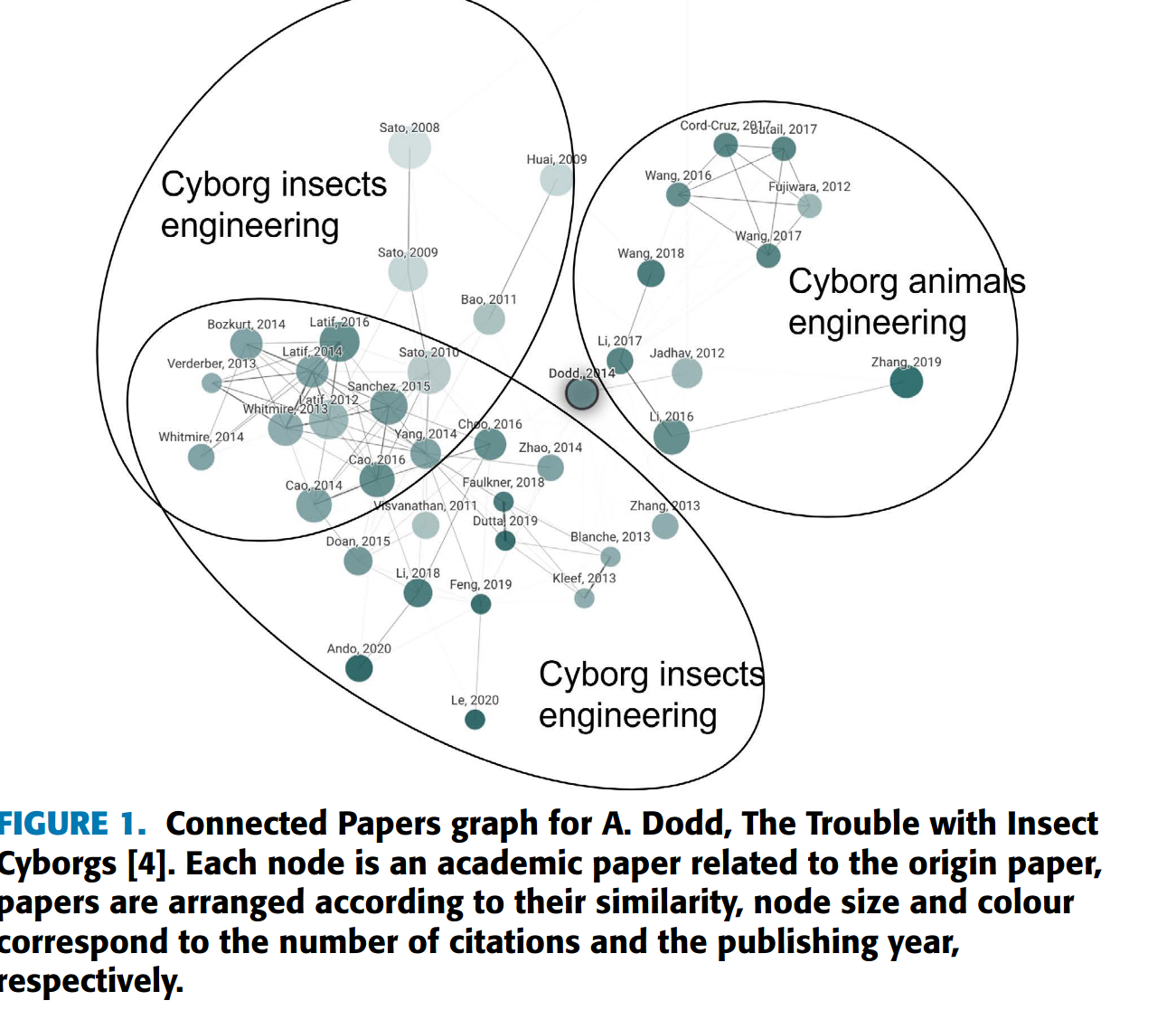
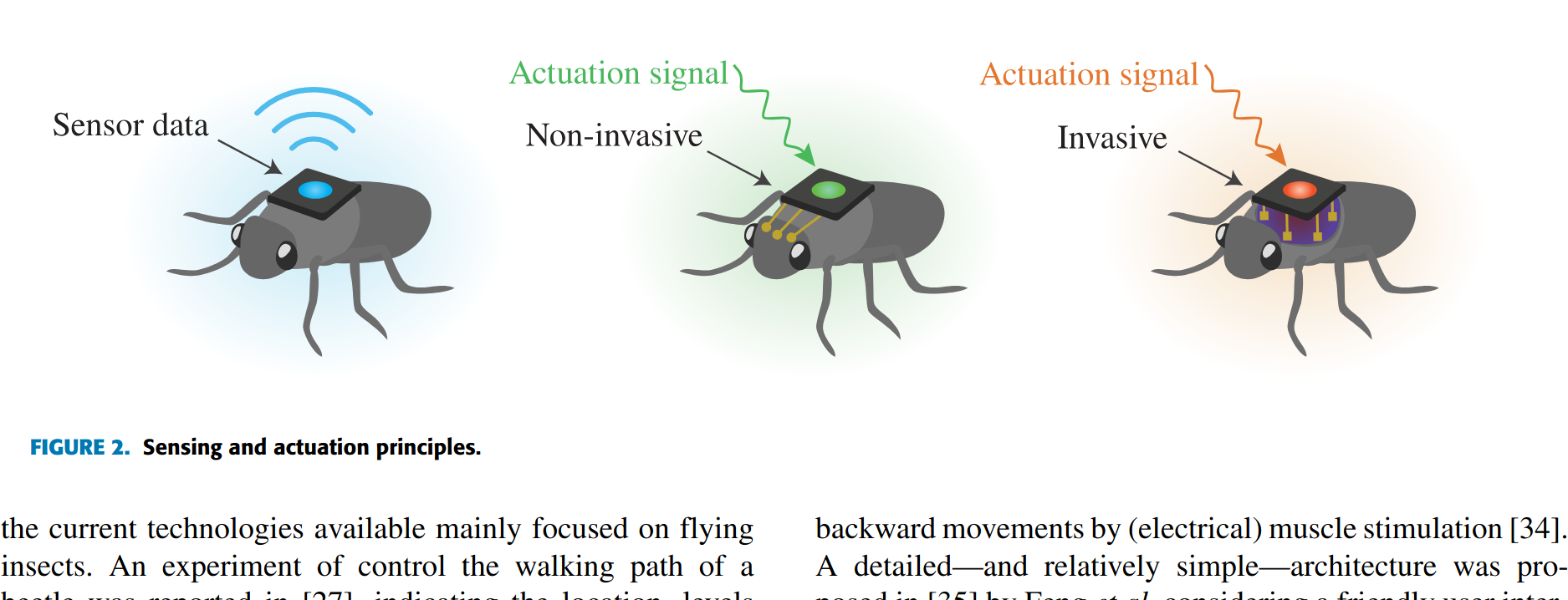
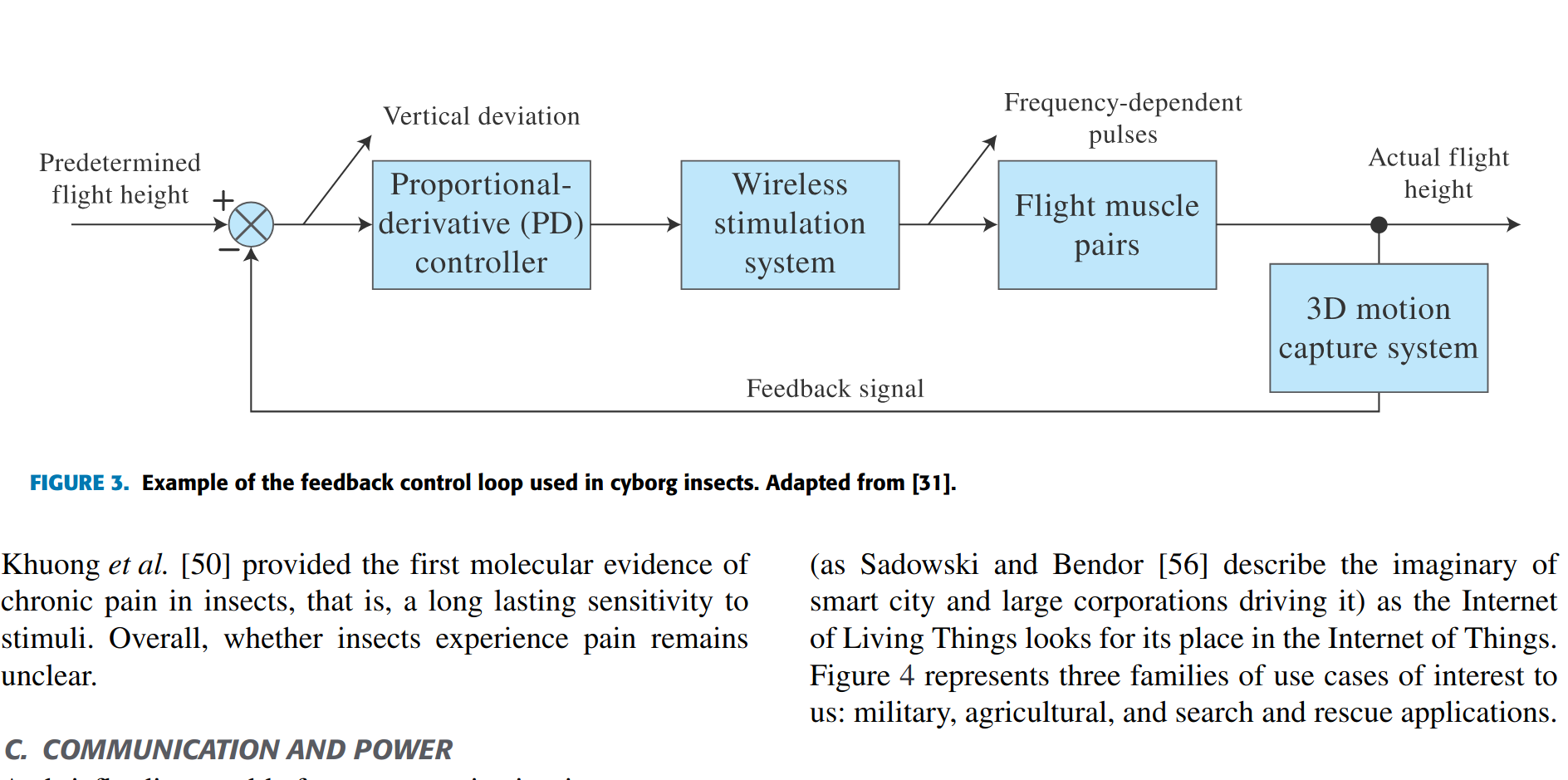
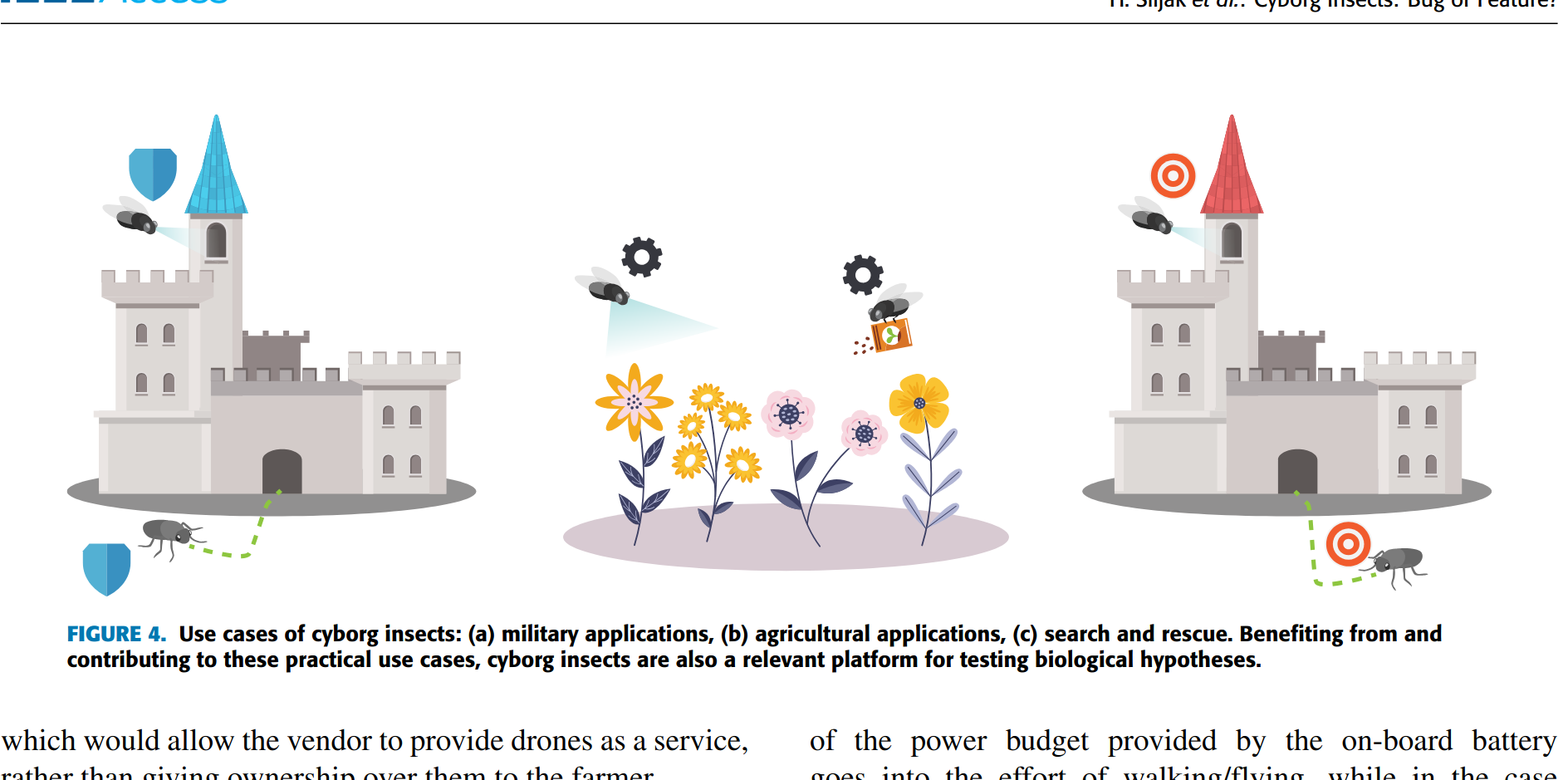
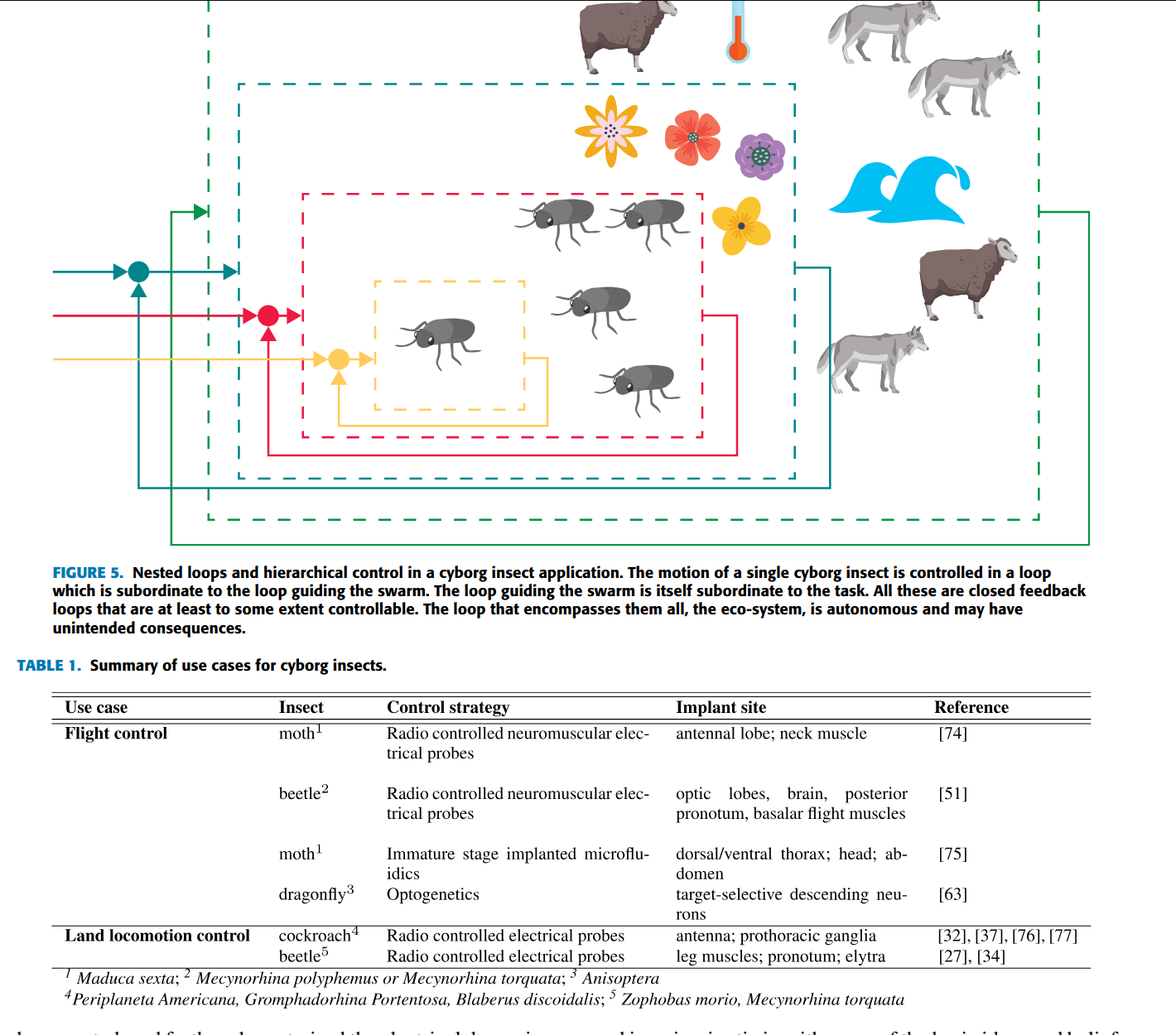
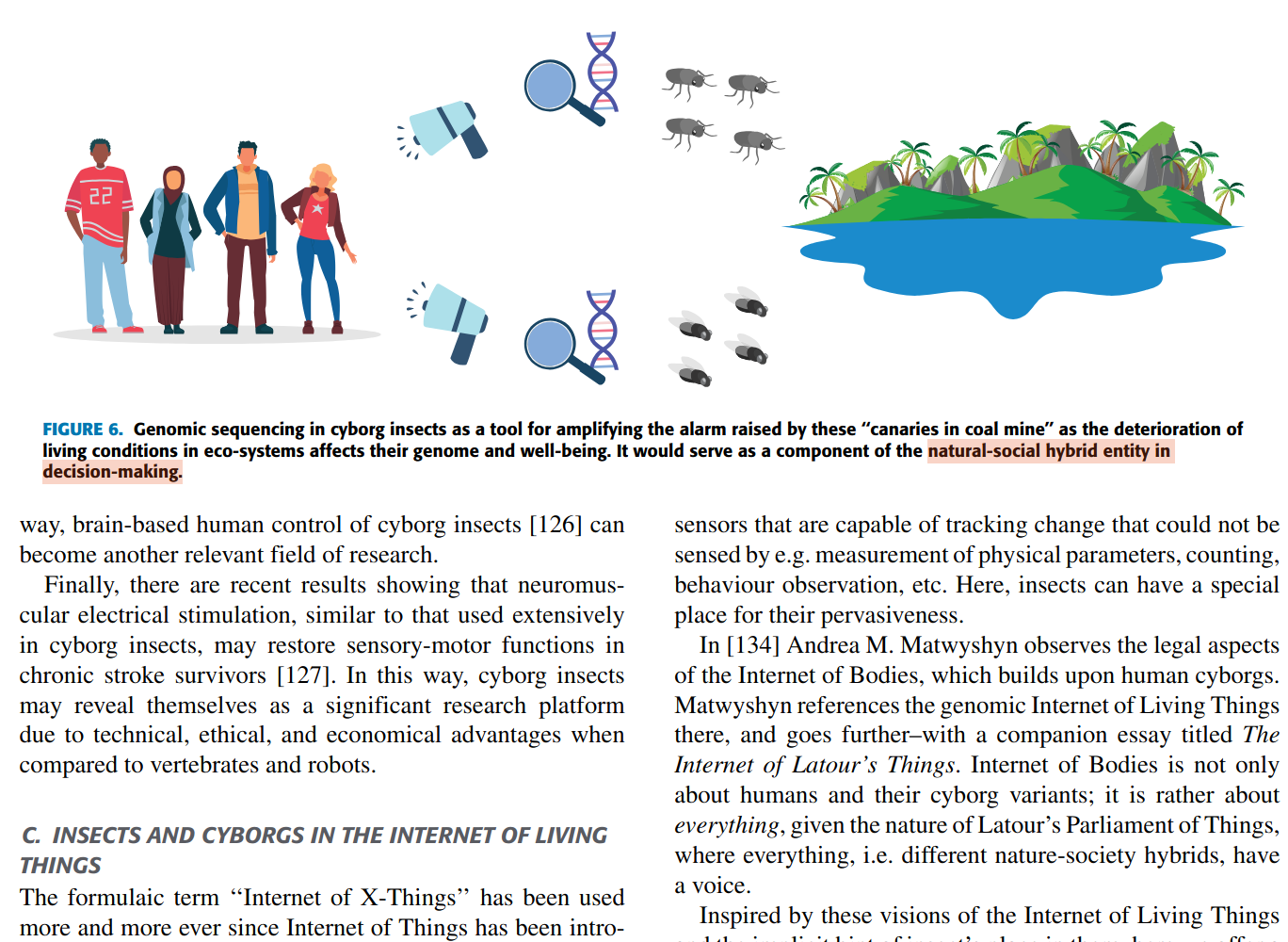






Комментарии
мера таки должна быть
Распределенная сеть импульсного жесткого электромагнитного излучения вокруг важных объектов возможно поможет защититься
конкретно такое уже сделано )
больше вопрос, когда новые породы начнут выводить специально заточенные под...
Извините,но меня больше дестурбируют электронные мандавошки....
Западоидам надо прочитать роман "Непобедимый" Станислава Лема.
Но они слишком высокомерны, чтобы читать какого-то поляка, хотя и русофоба.
увы да... поэтому и речь о _смыслах_ ...
-------------------------
Крейсер второго класса «Непобедимый» совершает посадку на пустынную и необитаемую планету Регис III, где незадолго до этого исчез другой земной корабль — «Кондор».
«Кондор» — крейсер того же класса, что и «Непобедимый» — неожиданно пропал во время рутинной экспедиции, отправив перед этим всего два сообщения. В первом говорилось об успешной посадке на поверхность планеты Регис III. Во втором говорилось о неких встреченных экипажем «мушках», а также была зарегистрирована серия бессмысленных импульсов, похожих на азбуку Морзе, и неоднократно повторяющиеся странные звуки.
Экипаж «Непобедимого» получил задание найти следы пропавшей экспедиции «Кондора» и выяснить причину её гибели. У биолога Лауды возникает идея, согласно которой на планете происходит эволюция механизмов, оставшихся от инопланетной цивилизации, прибывшей из района созвездия Лиры (лирян).
Судя по немногочисленным следам, сохранившимся от первых колоний роботов, типов роботов было несколько.
«Подвижные» — мобильные роботы, сложные, интеллектуальные, вооружённые, питались ядерной энергией.
«Простейшие» — простые конструктивно. Эти роботы, тем не менее, были способны к ограниченной приспособляемости. Они не были настолько интеллектуальны и специализированы как «подвижные», но при этом не зависели от наличия запасных частей и радиоактивного топлива.
Лишённые присмотра лирян, роботы начали неконтролируемо развиваться и изменяться. «Некроэволюция» (эволюция неживого) в условиях Региса III привела к тому, что выжили наиболее приспособленные. Ими оказались простейшие роботы — не самые сложные, интеллектуальные и мощные, а наиболее многочисленные и гибкие. Эти автоматы за тысячи лет некроэволюции научились эффективно бороться с конкурентами, которые превосходят их и по интеллекту, и по энерговооружённости. Им пришлось сражаться не только с другими роботами, но и с живым миром планеты. Для этого они выработали в себе способность возбуждать высокочастотное магнитное поле, разрушительно действующее на память любого робота или живого существа.
С их дальними потомками, которые имеют вид «мушек», и столкнулись экспедиции землян на «Кондоре» и «Непобедимом». При всех своих значительных технических возможностях, земляне оказались бессильны против мёртвой тучи «мушек». Даже «Циклоп» — самый мощный робот «Непобедимого», вооружённый системой силовых полей и сферическим излучателем антиматерии, оказался бессилен перед миллиардной тучей простейших «мушек», в сражении с которыми потерпел поражение и был выведен из строя. Позже, будучи полностью неуправляемым, напал на людей и был уничтожен.
Итоги столкновения человеческой цивилизации и чужих роботов оказались для людей плачевными. Крейсер второго класса «Кондор» был необратимо повреждён и навсегда остался на чужой планете. Экипаж «Кондора» погиб в полном составе. Экипаж «Непобедимого» также понёс серьёзные потери: часть личного состава погибла, часть была полностью выведена из строя. Предпринятая операция по спасению людей, подвергшихся нападению «мушек», закончилась неудачей: спасти не удалось никого.
Однако в ходе спасательной операции её единственный непосредственный участник начал понимать, что мёртвое наследие цивилизации лирян нельзя называть «врагом» в прямом смысле этого слова — так же, как нельзя слепо вмешиваться в существование «мушек», пусть они и угрожают людям на этой планете. В процессе эволюции и борьбы за существование, они стали практически частью природных сил планеты. Человек не вправе изменять этот порядок, так как мстить природе за стихийное бедствие абсолютно бессмысленно.
Люди были вынуждены отступить перед мёртвым «врагом», который, не обладая разумом в человеческом понимании, и будучи способен лишь на простейшие реакции, тем не менее являлся смертельно опасным и практически неуничтожимым.
Не удивлен.
А потом "военная необходимость" подскажет ставить на людей чипы отработанные на насекомых.
Все как всегда.
Люди относятся скептически, но даже то что делают студенты в университетских лабах с копеечными бюджетами впечатляет... ( мухи или тараканы с видеокамерами и бортовыми компьютерами задающими траекторию и питающиеся от энергии движения... ) что могут сделать корпы с доступом к своей литографии и прч нано думать не очень хочется.
Хотя имхо основное направление не чипы, а вывод новых управляемых гибридов - какая то комбинация подходов в т.ч. с использованием ИИ
Ставить? Чип заползёт вам в ухо во сне.
запутали напрочь
то они жрать собрались всяких мондавох, то киборгов из них делать
затейники хреновы
Неее...
Эти ребята просто умеют пудрить мозги с целью получить и освоить бабло. В России тоже такие есть, но мало. Основная масса уехала и теперь развлекается, как может. Напишут 100 тем и, даже если на одну бабки выделят, можно жить.
Это именно так!
Пока на муху получится поставить только совсем слабую железку. Так-что пока это чистый пиар.
Это как с роботами-собаками - крайне сложная и ненадёжная конструкция. А мобильных тележек о четырёх колёсах нет, хотя это на порядок проще.
специализированные железки могут быть, ну очень маленькими плюс идет изучение интеграции с "биосистемой" как таковой (основная проблема источник энергии) и не сказать чтобы уж совсем без успехов
https://www.researchgate.net/publication/224529430_Radio_control_of_insects_for_biobotic_domestication
хотя имхо конечно более перспективно это выведение каких то специализированных видов с помощью ИИ экспериментов криспа и прч
+1, это пыль в глаза.
На птиц, может быть, чего-то и можно было бы поставить. Причём даже не столько и инновационными методами - если попугаев и ворон приучают срать в горшок и делать фокусы на шоу, то уж приучить летать куда надо на разведку должно быть явно возможным.
https://pressa.tv/video/135254-processor-iphone-pod-mikroskopom.html
Бывают маленькие детальки, можно сказать, что сказка про Левшу уже не сказка.
даёшь рой дронов!
Не для нашего климата, какие мадагаскарские тараканы?
Есть ещё и червячки:
https://www.google.com/search?q=giant+gippsland+earthworm&sca_esv=d744b37d0a57b190&sca_upv=1&udm=2&sxsrf=ADLYWILFKqZJFO--gXtLQ4g1JXNBKbgkPQ:1727561988173&source=lnms&sa=X&ved=2ahUKEwjRtIf11eaIAxWuU1UIHd6kJ9kQ_AUoAXoECAYQAw&biw=1229&bih=621&dpr=1.56
Управляемый рой из шершней с нервно-паралитическим ядом против живой силы.